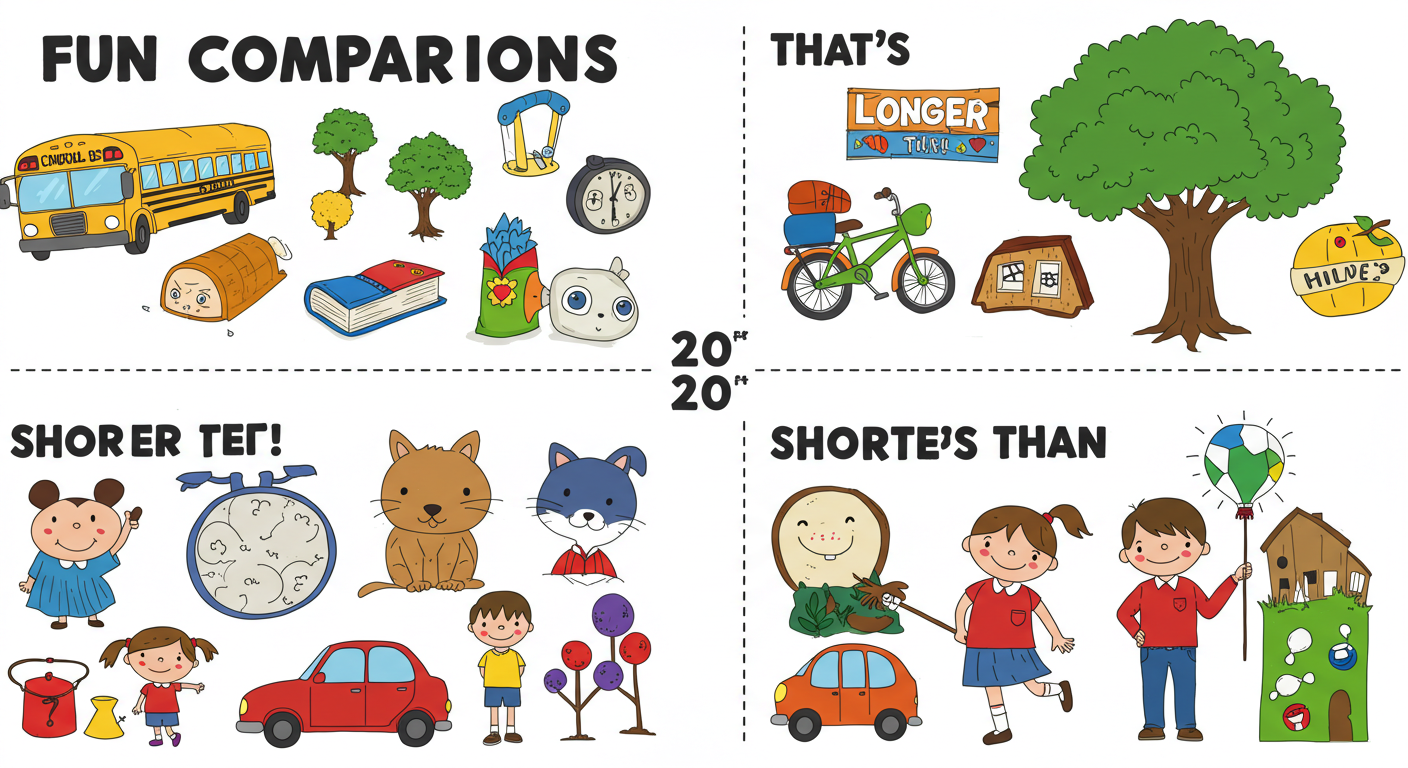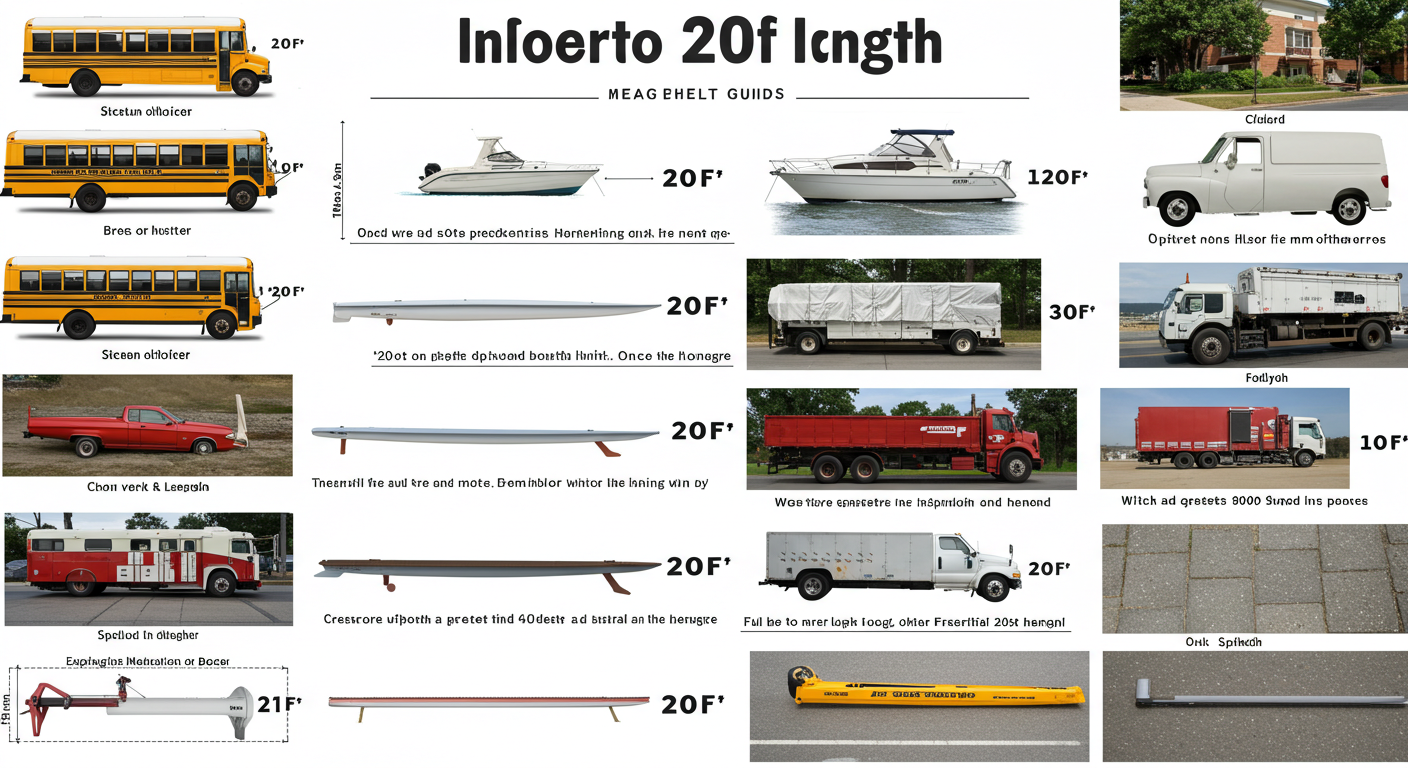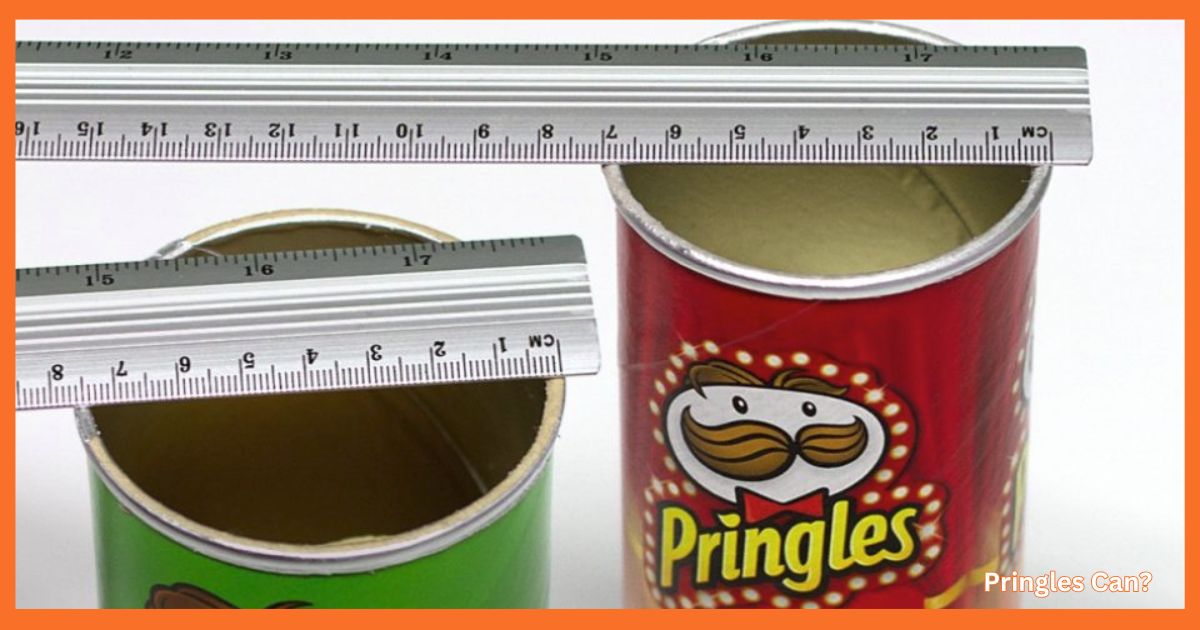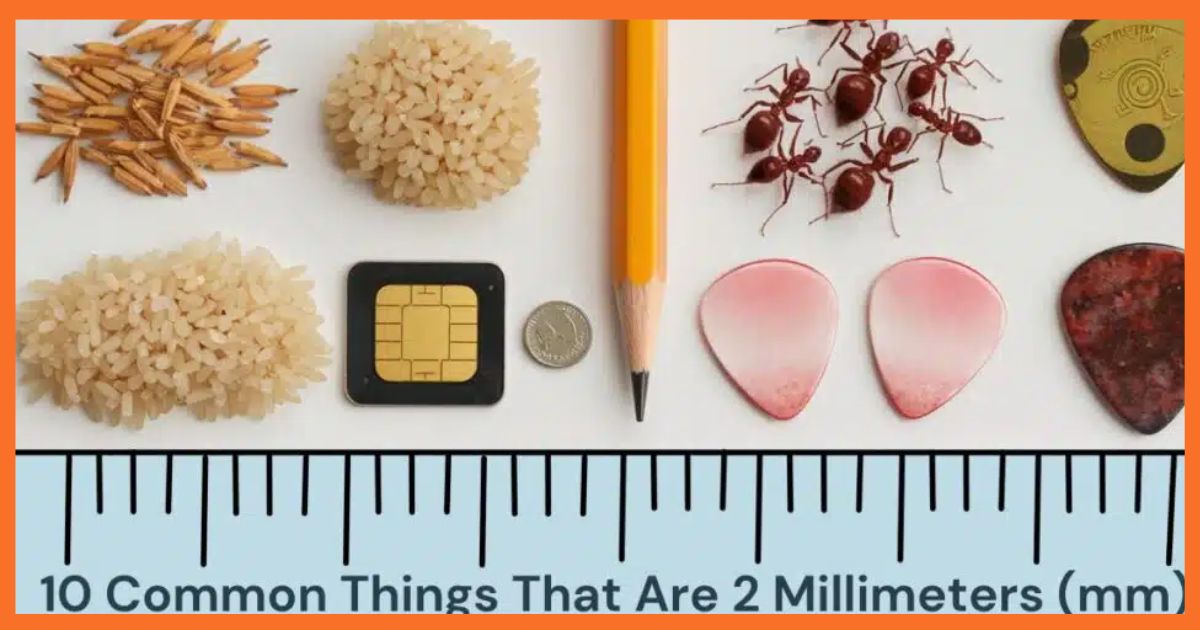You ever find yourself staring at a ruler or tape measure, thinking, “Okay, but how long is 20 feet really?” It’s funny, because while 20 feet might sound straightforward on paper or in a blueprint, wrapping your head around it in real life kinda takes a moment.
That length — 240 inches, or about 6.1 meters, or around 6.67 yards — it’s one of those measures that pops up all the time, yet most of us don’t have a visceral sense of it. So, how long is 20 feet, truly?
Well, that’s exactly what we’re diving into here: the world of things that measure about 20 feet. Not just some dry, “here’s a number” article, but a genuine look at the everyday objects, structures, and even creatures that give meaning to this distance.
And I promise, it’s not what you’d expect. Plus, there’s something magical about understanding measurements that connect us all — from home renovations to wildlife observation, and even urban planning. Ready to get a feel for 20 feet? Let’s take this journey together.
The Everyday Essentials: Familiar Objects That Are 20 Feet Long
Sometimes, the best way to grasp a length is through things we see or use daily. Let’s kick off with some objects and examples representing 20 feet you probably already know.
- Standard school bus length (~20 feet): Yeah, those yellow buses hauling kids around are roughly this size — although many are a bit longer, some smaller models clock in right at 20 feet. So next time you’re waiting at a bus stop, just imagine the entire length of that bus.
- Four park benches (5 feet each): Imagine lining up four classic park benches end to end. That’s your 20 feet right there. It’s a handy visualization, especially if you’ve lounged on a park bench and wished it was just a bit longer.
- Delivery trucks / Box trucks: Ever notice those mid-sized delivery vans zipping around? Many box trucks fit the 20 feet mark, a crucial size for urban deliveries where maneuverability matters.
- Commercial awnings: Those fabric or metal awnings shading shopfronts often span around 20 feet, giving a welcoming stretch of shelter over windows and entrances.
- Measuring tapes (25 feet length): Standard measuring tapes, often 25 feet long, give you a close benchmark to think about. They’re like your personal, portable ruler for this dimension, and professionals like surveyors and construction workers swear by them.
Each of these objects roots 20 feet into a real, tangible scale. It’s not just an abstract number — it’s a length you interact with in your daily life.
Read This Blog: https://mozydash.com/how-is-7-inches-long/
Architectural Angles: Buildings and Structures Measuring 20 Feet
Now, stepping beyond the everyday, what about things bigger — like parts of buildings, or structures that put 20 feet to work in design?
- Two-story building height: The height of a typical two-story home is often close to 20 feet. Think about how you look up at those cozy houses in your neighborhood, and that’s roughly the vertical space they claim.
- Two-car garage width: Your average garage that fits two cars side by side is usually about 20 feet wide. This helps you plan your home renovations or visualize parking arrangements without second-guessing.
- Indoor swimming pool width (20 feet): Some indoor pools or lap pools, designed for recreational swimming rather than competition, span around 20 feet wide. It’s a cozy but adequate size to splash around or practice strokes.
- Flagpole height (20 to 25 feet): Those majestic flagpoles you see on school campuses, parks, or government buildings often stand about 20 feet tall, giving your flag just enough height to catch the breeze and attention.
- Shipping container length (20 feet): The world of shipping and logistics revolves a lot around the 20-foot container — a standard size in cargo transport, efficient and versatile. It’s amazing how this simple measurement shapes global commerce.
In architecture and planning, 20 feet isn’t just a number — it’s a standard. It shapes spaces we live in, the scale of what we build, and how we organize public and private areas.
Nature’s Measure: Wildlife and Marine Life at 20 Feet

Switching gears to the wild, 20 feet is also a fascinating measurement in the animal kingdom. It helps biologists and enthusiasts visualize the size and grandeur of some creatures.
- Giraffe (Giraffa camelopardalis): Adult giraffes can stand between 14 and 20 feet tall, with males sometimes reaching the upper end. Next time you visit a zoo or watch a documentary, think of the giraffe’s neck stretching to a length nearly equal to 20 feet — a living natural skyscraper.
- Marine life examples (bottlenose dolphin, smaller whale species): Some smaller whale species or large dolphins reach about 20 feet in length. It’s wild to think of a creature swimming beneath the surface, spanning that much length gracefully through water.
- Recreational boats size: Many pleasure boats or small yachts hover around the 20-foot mark — just enough for a weekend escape or lake adventure, balancing comfort and maneuverability.
These natural examples highlight how 20 feet isn’t only about construction or human scale but is deeply woven into the fabric of life on Earth.
Measuring Mastery: Tools and Techniques for 20 Feet
How do the pros nail down 20 feet so perfectly? There’s an art and science to it, mixing technology and traditional methods.
- Measuring tapes and laser distance meters: These trusty tools bring measurement to your fingertips, with measuring tapes typically at 25 feet, giving a bit of buffer for accuracy. Laser distance meters offer digital precision, shooting beams to pinpoint exact lengths without climbing ladders or stretching tape.
- Surveyor’s wheels: Rolling a surveyor’s wheel along the ground, one full turn often equals a certain distance, making it easier to measure stretches of 20 feet or more in parks, construction sites, or urban planning projects.
- Step measurement technique (2.5 feet average adult step): If you don’t have a tape, counting your steps — assuming an average step length of about 2.5 feet — gets you close. Eight steps, and boom, you’ve walked roughly 20 feet. It’s surprisingly handy if you’re outdoors without gadgets.
- Triangulation measurement method: In tricky spots, where you can’t measure directly, professionals like architects and landscape architects use triangulation — measuring angles and distances from multiple points to calculate lengths accurately.
Mastering these methods isn’t just technical skill; it’s an essential part of planning safe constructions, event layouts, and even urban navigation.
Why Knowing 20 Feet Matters: Practical Applications in Daily Life
You might wonder, “Why should I care about 20 feet beyond trivia?” But this measurement plays a big role in many practical settings.
- Home renovation: When arranging furniture or planning room expansions, knowing what fits in 20 feet helps you visualize before breaking walls or buying new sofas.
- Cargo capacity and logistics: Fleet managers and commercial transport workers optimize space using the standard 20-foot shipping containers, ensuring efficient loading and delivery.
- Pool design and safety: Pool planners use the 20-foot width standard for indoor pools, balancing safety with fun for swimmers.
- Event and garden planning: Whether you’re setting up a tent, arranging seating, or planting rows of flowers, measuring 20 feet helps you space things right — avoiding overcrowding or awkward gaps.
- Construction safety margins: Professionals like construction workers rely on precise measurement of spaces like 20 feet for safety zones and structural integrity.
- Flag installation services: Knowing flagpole heights around 20 to 25 feet ensures flags fly high and proud without hazards.
This length is more than a number — it’s a vital chunk of spatial awareness guiding many of life’s details.
Fun Comparisons: What’s Longer or Shorter Than 20 Feet?

Sometimes, putting 20 feet in perspective means comparing it to things just outside its range.
- 25 feet (measuring tape length): A tad longer, but many tapes max out here, giving a useful upper benchmark.
- Two-car garage width: Often a perfect match or slightly more than 20 feet, depending on car sizes.
- Ladders (extension ladders): Some ladders stretch just beyond 20 feet, making them indispensable for reaching roofs or tall windows safely.
- Flagpole height: Usually between 20 to 25 feet, so a bit taller than our 20-foot baseline.
- Standard school bus: Slightly longer than 20 feet in many cases, sometimes hitting 35 feet or more, especially the full-sized ones.
These comparisons help fine-tune your mental “measurement muscle” — making you a pro at spatializing spaces and objects.
Real Voices: What the Pros Say About 20 Feet
I reached out to a few experts who work with measurements and spatial planning daily.
One professional contractor told me, “Knowing exactly where 20 feet lands is huge for safety. When you’re placing beams or cutting lumber, half an inch can mean a big difference.”
An urban planner noted, “The 20-foot measure often dictates how wide sidewalks or lanes are, affecting traffic flow and pedestrian safety. It’s like a silent hero in city design.”
And a marine biologist shared, “When tracking animals like the bottlenose dolphin, understanding their size in feet helps us create better conservation zones and study their behavior effectively.”
These voices bring real-world depth, showing how essential this measurement is beyond just numbers.
Frequently Asked Questions
how big is 20 feet
20 feet is about the length of a standard delivery truck or roughly the width of a two-car garage.
how long is 20ft
20 feet equals 240 inches or approximately 6.1 meters, similar to the height of a two-story building.
how big is 20 ft
20 ft represents a space large enough to fit four park benches placed end to end or an average-sized indoor swimming pool width.
what is 20 feet long
Objects like a standard school bus, a shipping container, or a commercial awning are typically around 20 feet long.
what does 20ft look like
Visually, 20 feet is roughly the length of two midsize cars parked bumper to bumper or the height of a giraffe standing tall.
Conclusion
So, how long is 20 feet, really? It’s a dimension that threads through the everyday and extraordinary, stitching together home, nature, industry, and play. Whether it’s the height of a giraffe stretching its elegant neck, the width of a cozy indoor pool, or the length of a reliable shipping container, 20 feet connects us all.
Next time you hear or see 20 feet, don’t just think “that’s a measurement.” Picture a school bus, a two-story home, or four park benches lined up under a blue sky. Let the number feel alive, practical, and even a little poetic.
If you wanna get creative, try pacing out 20 feet yourself, or compare it to objects in your home. Trust me, suddenly measurement feels less like math and more like storytelling — a way to understand your space and the world better.
And hey, what’s the most surprising thing you’ve realized is about 20 feet long? Drop a comment and share your story — I’d love to hear how you see this everyday but extraordinary measure.

Rober max seo expert



